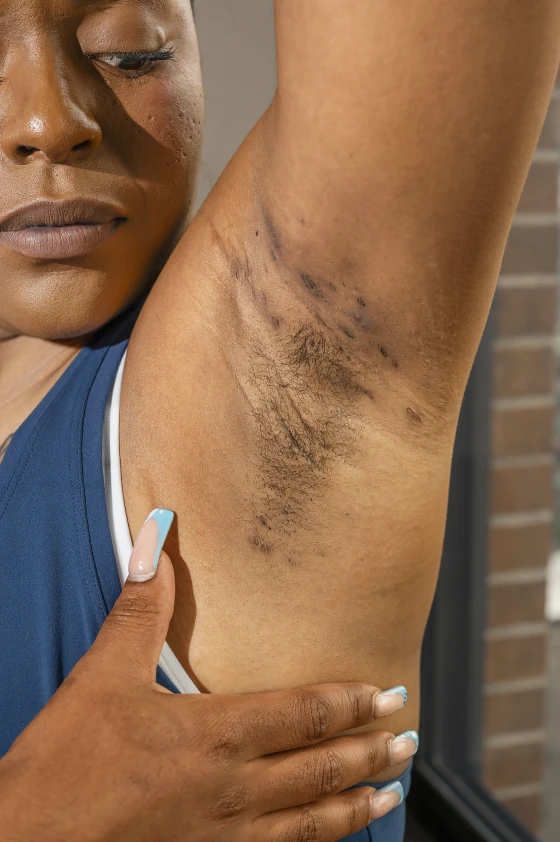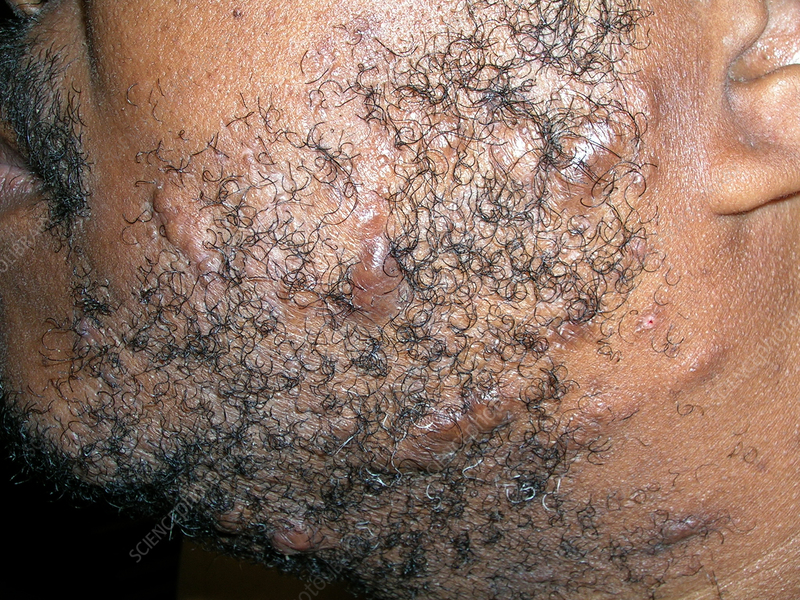Table of Contents
Acne is a common skin condition, but what if those persistent bumps, painful bumps, or recurring skin lesions aren’t acne at all? Many people who struggle with “acne-like” symptoms may actually be dealing with a condition called hidradenitis suppurativa (HS). This chronic skin disease is often misdiagnosed, leaving patients frustrated and untreated for years.
Hidradenitis suppurativa is a difficult-to-diagnose skin problem that often resembles acne. However, unlike acne, HS often appears as painful, inflamed bumps that can rupture and cause scarring. Understanding the symptoms and treatment options is crucial to effectively managing this condition. Here we will review the symptoms, treatment options, and medications of hidradenitis suppurativa to help you identify and manage this challenging condition.
What is Hidradenitis Suppurativa?
Hidradenitis suppurativa is a chronic inflammatory skin disease that affects areas with sweat glands, such as the face, armpits, groin, buttocks and under the breasts. It causes painful bumps, abscesses and tunnel-like channels under the skin. Although it often starts as small pimples or boils, the condition can develop into serious, recurring sores.
A proper diagnosis requires specialized care, often by a dermatologist. There are no specific laboratory tests for diagnosing hidradenitis suppurativa, but a healthcare provider can make the diagnosis based on the symptoms, skin appearance, and medical history. For individuals who experience persistent or worsening symptoms, consulting a skin specialist is essential.
Hidradenitis Suppurativa Symptoms
One of the reasons why hidradenitis suppurativa is difficult to diagnose is its similarity to other skin problems. Common symptoms include:
- Painful bumps or lumps that often start as small, tender lumps.
- Recurrent abscesses that may drain pus and have an unpleasant odor.
- Tunnel formation under the skin, connecting abscesses and creating a network of lesions.
- Scars and dark spots left by healed or ruptured bumps.
If these symptoms sound familiar, it is worth consulting a doctor about hidradenitis suppurativa. Identifying the condition early can prevent complications such as severe scarring and limited mobility.
Treatment Options for Hidradenitis Suppurativa

Although there is no cure for hidradenitis suppurativa, several treatment methods can help control symptoms, reduce flare-ups, and improve quality of life. Treatments fall into two main categories: medical and surgical.
Medical treatments
#1. Topical and oral antibiotics
Mild cases may respond well to topical antibiotics applied to the skin. For more serious conditions, oral antibiotics such as doxycycline or clindamycin may be prescribed.
#2. Hormonal therapy
Hormonal treatments, such as oral contraceptives or spironolactone, can help regulate hormonal imbalances that can cause flare-ups.
#3. Biological medicines
Biologic drugs such as adalimumab (Humira) and infliximab (Remicade) are injected to target specific parts of the immune system. These treatments are effective for moderate to severe hidradenitis suppurativa.
#4. Steroid injections
Triamcinolone injections can help reduce the inflammation and swelling of individual ulcers.
#5. Oral retinoids
As with acne treatments, oral retinoids can be effective for mild to moderate cases. However, these are not recommended during pregnancy or breastfeeding.
#6. Pain management
Over-the-counter pain relievers or prescription medications can help manage discomfort during flare-ups.
Surgical and procedural treatments
For advanced cases, medical treatments alone may not be sufficient. Surgical options include:
- Unroofing: A procedure that removes tissue to expose and treat tunnels under the skin.
- Laser therapy: Carbon dioxide lasers can treat ulcers and reduce recurrence.
- Surgical removal: In severe cases, it may be necessary to completely remove the affected skin, sometimes with skin grafts.
Lifestyle Tips for Treating Hidradenitis Suppurativa

In addition to medical care, adopting certain lifestyle habits can keep symptoms under control:
- Daily Skin Care Routine: Use gentle, soap-free cleansers and avoid harsh scrubbing.
- Dietary changes: Reducing dairy, red meat, and foods with a high glycemic index can reduce flare-ups.
- Weight management: Maintaining a healthy weight can improve symptoms.
- Quit smoking: Smoking is associated with worse outcomes in hidradenitis suppurativa.
When should you consult a doctor?
If you suspect that your “acne” is hidradenitis suppurativa, do not delay in seeking professional advice. Early diagnosis and treatment can significantly improve your quality of life and reduce complications. Regular follow-ups with a dermatologist and a customized care plan are crucial for effective management of the condition.
Final thoughts
Hidradenitis suppurativa is a challenging, often misunderstood condition that requires specialized care. If you experience recurring painful lumps or abscesses, don’t dismiss them as regular acne. Consult a dermatologist to explore treatment options, including hidradenitis suppurativa medications and lifestyle modifications.
With the right approach, it is possible to control symptoms and live a healthier and more comfortable life. Stay proactive, seek support, and work with your healthcare provider to create a comprehensive treatment plan tailored to your needs.
Featured image: Towfiqu Ahamed/Getty Images
Follow us on Instagram for the latest news in fashion, lifestyle and culture @StyleRave_
—Read also

